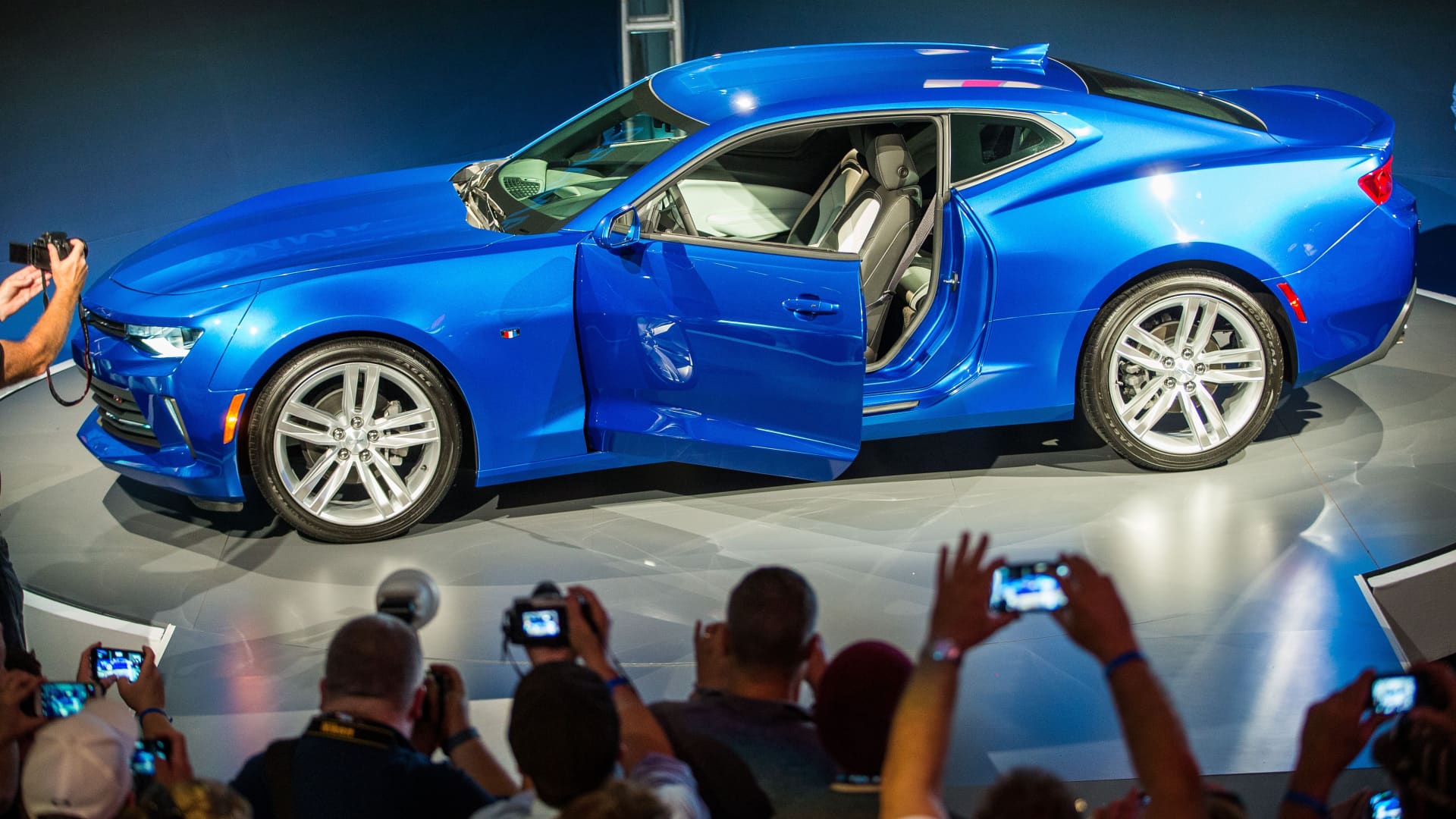When Francisco “Cisco” Mercado saw a bright yellow Chevrolet Camaro play one of the shapeshifting robotic superhero Transformers in the 2009 eponymous movie, he knew he had to have a real-life version.
“My wife was sitting with me. I said, ‘We’re going to get that car,'” he told CNBC. “And she turned around and said, ‘Honey, I think you are going to get that car.’ And we did.”
Fans like Mercado have helped keep the Camaro alive since it was introduced as a competitor to the Ford Mustang in 1966. But their enthusiasm may not be enough — parent companyGeneral Motorshas said the car is going away after the 2024 model year, and the automaker is not saying much about what will follow.
Tightening regulations, slumping sales in the segment, and a growing preference for crossovers and sport utility vehicles have all but doomed the car and threatened its competitors. Rival Dodge, owned by Stellantis, has said its 4-door Charger and 2-door Challenger will both bow out after 2023. So far the plan seems to be to make an electric vehicle that bears a striking resemblance to the current Dodge cars.
That makes the Ford Mustang the last vehicle in the segment standing in its current gas-burning form. Even Ford seems to have acknowledged times are changing, introducing a 4-door electric crossover called the Mustang Mach-E.
The Camaro has been discontinued before, in 2002. It was brought back as a concept car in 2006 and put into production in 2009 for the 2010 model year. That 2009 Transformers movie appearance was a way of introducing the new vehicle to the world beyond die-hard fans.
It sold 61,000 units in 2009, the first year it was reintroduced. Through 2014, sales were consistently in the 80,000-unit range, outperforming rival Mustang.
But by 2019, sales had fallen to about 48,265 units, down from 86,297 five years earlier.
By that time it was lagging far behind competitors: The Ford Mustang sold 72,489 units in 2019, and the Challenger, 60,997. But the headwinds were universal among muscle cars.
People weren’t buying sports cars like they used to. By 2010 the infiltration of the crossover utility vehicle was well underway, and since then the segment has taken over, according to S&P Global Mobility.
Sedans and smaller calls made up 43% of all vehicle sales in 2010. In 2022 they made up 19%. Sports cars, already a niche segment at just over 5% of the market in 2010, made up less than 2% of sales in 2022.
Together, trucks, SUVs and crossovers now make up about three-quarters of the market.
GM, like other automakers, is also facing tightening fuel economy regulations. New federal rules will require an automaker’s fleet to get an average of 49 miles per gallon by 2026. That’s almost twice the average fuel economy of the most efficient Camaros, and more than twice GM’s 2021 fleetwide average, the most recent data available.
GM says this is “not the end of Camaro’s story.”
“Just like we’ve done in the past, it had a little bit of a hiatus,” said Harlan Charles, product manager for Corvette and Camaro. “And when we have the right technology, we’ll come forward and bring it back.”
Watch the video to learn more.

ivermectin 12 mg tablets for humans – order carbamazepine 400mg online cheap how to buy tegretol
order isotretinoin 10mg generic – buy isotretinoin 10mg sale zyvox for sale online
order amoxil pills – combivent 100mcg cost purchase ipratropium for sale
azithromycin 250mg uk – zithromax 250mg oral purchase nebivolol without prescription
omnacortil 10mg oral – prednisolone cheap buy progesterone no prescription
brand furosemide 100mg – furosemide 40mg usa betnovate 20gm without prescription
order neurontin pills – itraconazole pill buy generic sporanox 100 mg
buy augmentin 625mg for sale – nizoral 200mg sale order duloxetine 20mg pills
order semaglutide generic – order cyproheptadine 4mg for sale buy periactin 4 mg for sale
brand tadalafil 5mg – sildenafil 100 mg purchase viagra pills
viagra 100mg pill – order tadalafil 10mg sale order tadalafil 40mg pill
buy generic lipitor 80mg – buy generic zestril 5mg purchase lisinopril generic
atorvastatin brand – buy zestril medication oral zestril
methylprednisolone generic name – medrol tablet triamcinolone 10mg brand
purchase misoprostol online cheap – orlistat pill buy diltiazem online
order zovirax 800mg generic – allopurinol pills rosuvastatin for sale online
domperidone 10mg uk – sumycin 250mg us buy generic cyclobenzaprine for sale